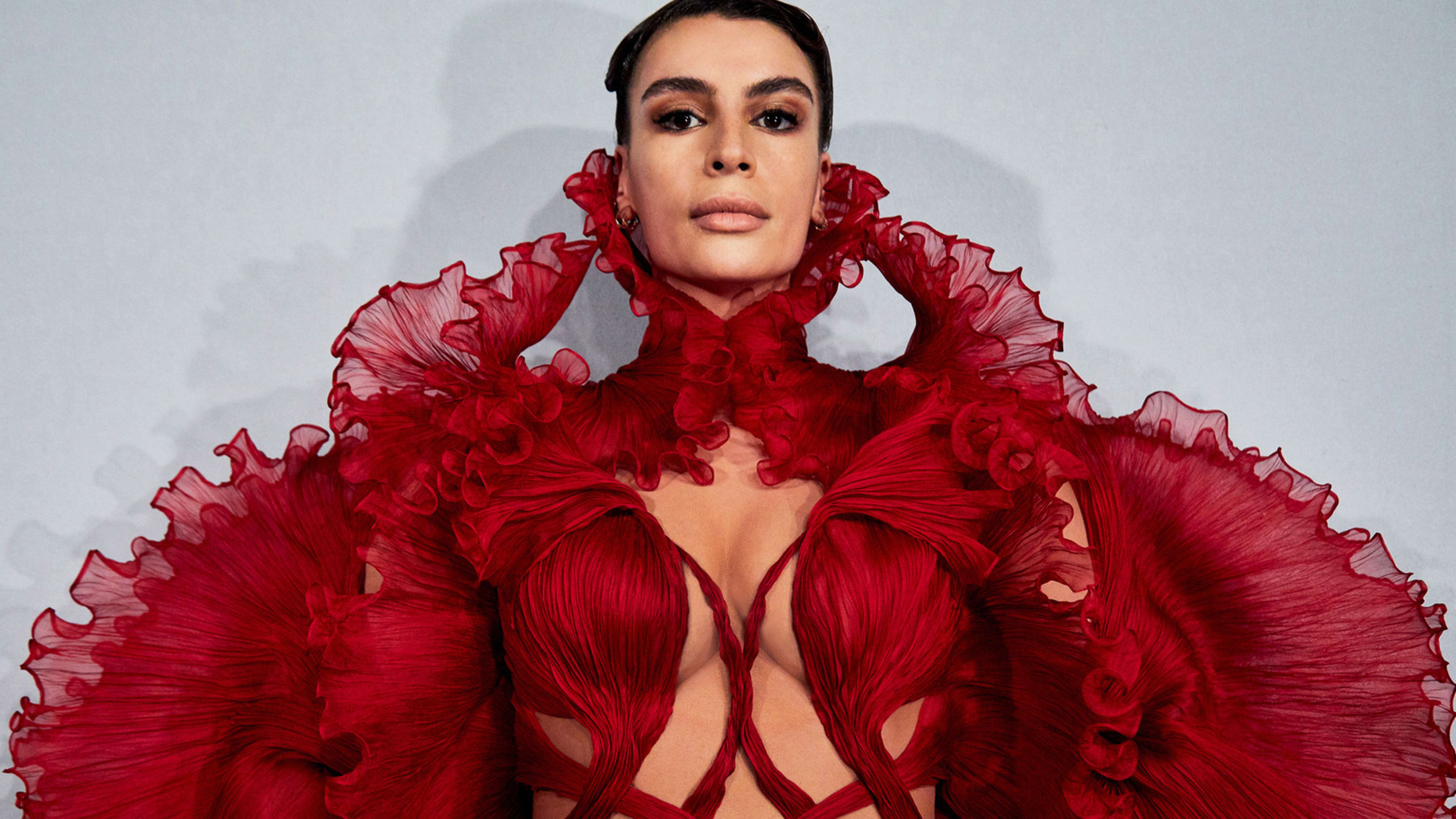For a recent collection, designer Iris van Herpen sent models down the runway in gowns that rippled with each step they took, reminiscent of waves undulating at the turning of the tide. This connection to water was deliberate: The dresses were made from plastic fished out of the ocean by the environmentalist organization Parley for the Oceans, and turned into fabric.
Since launching her fashion house in 2007, the Dutch designer has dressed everyone from Lady Gaga to Beyoncé, but in many ways she’s unlike any other haute couture designer. From the start, she has embraced science and technology, incorporating both concepts and cutting-edge materials into her work. She has created dresses with electricity literally bolting from sleeves, 3D-printed shoes, and digitally printed fabric.
Now that it’s clear that fashion is contributing to the destruction of the planet, van Herpen is beginning to explore what it will take to build a more sustainable industry. Ultimately, she believes that nature itself may offer solutions. She is endlessly fascinated with the natural world, from the complexity of ecosystems to the way that nature constantly rejuvenates itself.
And she leaves her audience hopeful: She calls this collection Roots of Rebirth because she believes it is possible to re-create the fashion industry—and indeed the world—despite all the destruction already done. I sat down with her to talk about why her design studio is a science lab, the cutting-edge materials she’s using, and whether it is truly possible for the fashion industry to become sustainable.
Fast Company: This collection uses plastic fished out of the oceans, but it seems to also be inspired by water.

Iris Van Herpen: You’re right. I live in Amsterdam, in the Netherlands, so water is everywhere. Here in my studio, I look out at canals, and it always inspires me. I am drawn to the fluidity of water; it is constantly in motion.
Movement is what draws me both to fashion and to nature. As a designer, I create garments based on how our bodies move; but our bodies are part of nature, and nature itself is constantly in motion. I believe that both nature and fashion can be beautiful forces of transformation.
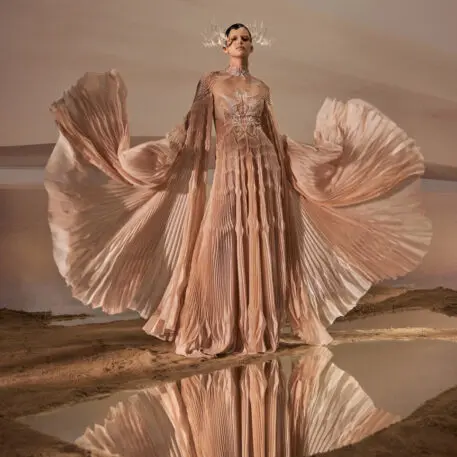
IVH: To me, fashion is a form of art that you wear on your body. It’s the language that we use to express ourselves, and sometimes re-create ourselves. But I also see fashion as an instrument of change, partly because it affects everybody: It’s something that affects biologists, scientists, my neighbor down the street. That’s why I believe it is such a powerful tool for helping us engage with big issues, like the future of the planet and climate change.
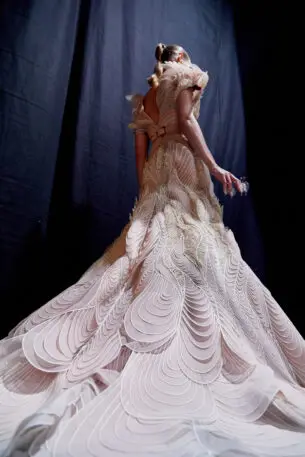
IVH: Fashion often takes inspiration from nature, but often it is at a very superficial level, like plastering outfits with leopard prints or fur.
I think of nature as an inspiration not just for its beauty, but also for its complex, perfect processes. Nature is very intelligent; it is full of interconnected systems where nothing is wasted and everything is perpetually renewed. I am interested in how we can mimic some of these processes as we design systems. How can we transform fashion into a closed-circle economy, where materials are continually recycled? This is the way that nature works.
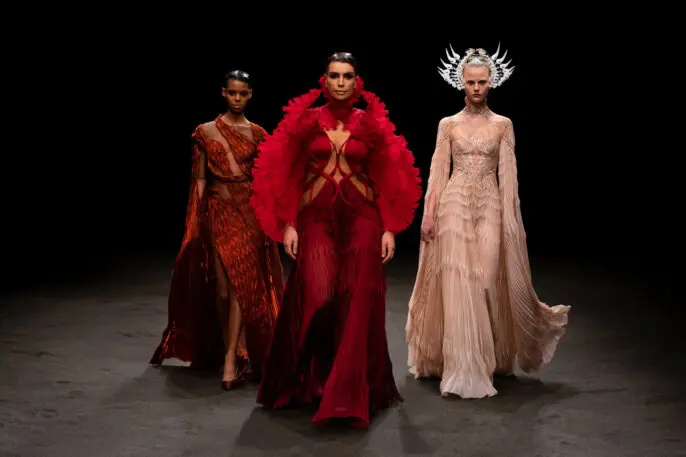
IVH: I met Cyrill Gutsch (Parley’s founder) many years ago in Paris. I found it inspiring that he was working to get plastic out of the ocean. But the hard part is creating fabrics out of ocean plastic that are really high quality, otherwise you are just relocating waste from the ocean to poorly made garments. The ultimate goal was to create really high-end products from it. So I wanted to use the material partly to show the industry that this could be done.
FC: What materials are you most excited to experiment with?
IVH: This past year has been a hard one for everyone, including myself. But it has given me time to do research and partner with companies on material innovation. I have been reading about many plants that are inspiring me to think about how nature can be a powerful tool that can solve some of our problems. Fungi can eat our plastics and even radioactive materials, so we can really “hire” nature to get rid of a lot of the waste we create. We’re working with a company that creates printed materials that actually clean up the air.
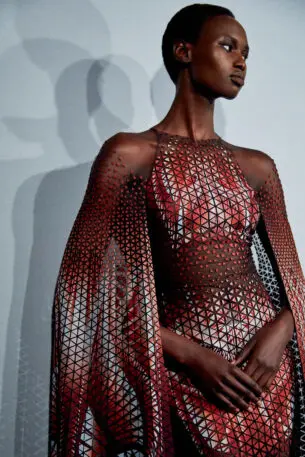
IVH: I did a few seasons of ready-to-wear, and I saw what it meant to produce on a bigger scale, which creates excess and waste. I decided to go back to haute couture because it is a system where you only create on demand. I think ultimately the whole industry can do that.
But more importantly, the pace of haute couture is much slower; it gives me the time and space to invest in material innovation. I think of my studio as a laboratory, where I can think about science, craftsmanship, and sustainability. We can spend months investing in a new material that another fashion company may not have the time to do.
And in many ways, my clients are investors, supporting this work. It’s beautiful that couture clients are becoming more and more aware about sustainability. They are helping me expand the boundaries of fashion.
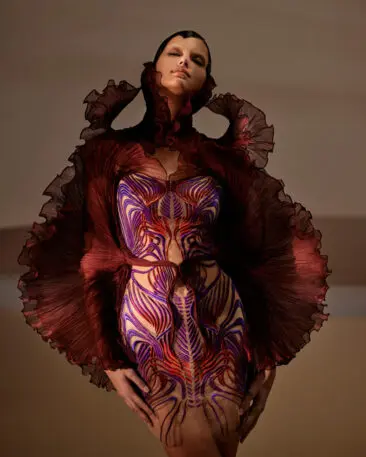
IVH: Absolutely. Personally, I’ve never been interested in trends. When we’re making clothes for clients, interestingly enough, they look at my entire body of work and pick looks they find inspiring, not just from the latest collection, but also re-creating looks from all the way back to 2008. These clients are not buying something for a season, but for the rest of their lives, perhaps even to pass on to a loved one afterwards. You can compare my work to how you might buy a piece of art.
But of course this is not the case in the majority of the industry: Some brands do six to eight collections a year, which is not necessary either for brands or consumers. I do have a sense that the fashion cycle is slowing down, especially during the pandemic. Brands are creating smaller collections and fewer of them. I think choosing to go with trends is a conscious decision. You can decide not to do this. If a brand is able to create a DNA—an identity that endures through time—customers will see the value of that.
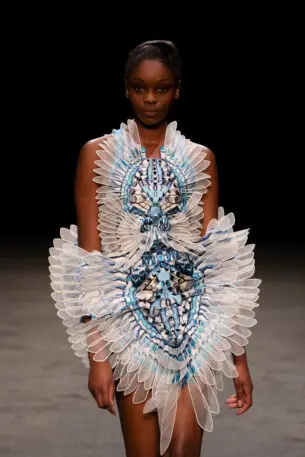
IVH: Yes, I do. I believe we have the intelligence to solve the problems we have created in the fashion industry. The scary thing is whether we will be able to do it fast enough. The pressure on the next generation is even higher because they will be facing the consequences of a warming planet even more than we are. And I think that will speed up the pace of change. The pandemic has also heightened our awareness of how fragile our existence is here.
Recognize your brand’s excellence by applying to this year’s Brands That Matter Awards before the early-rate deadline, May 3.
